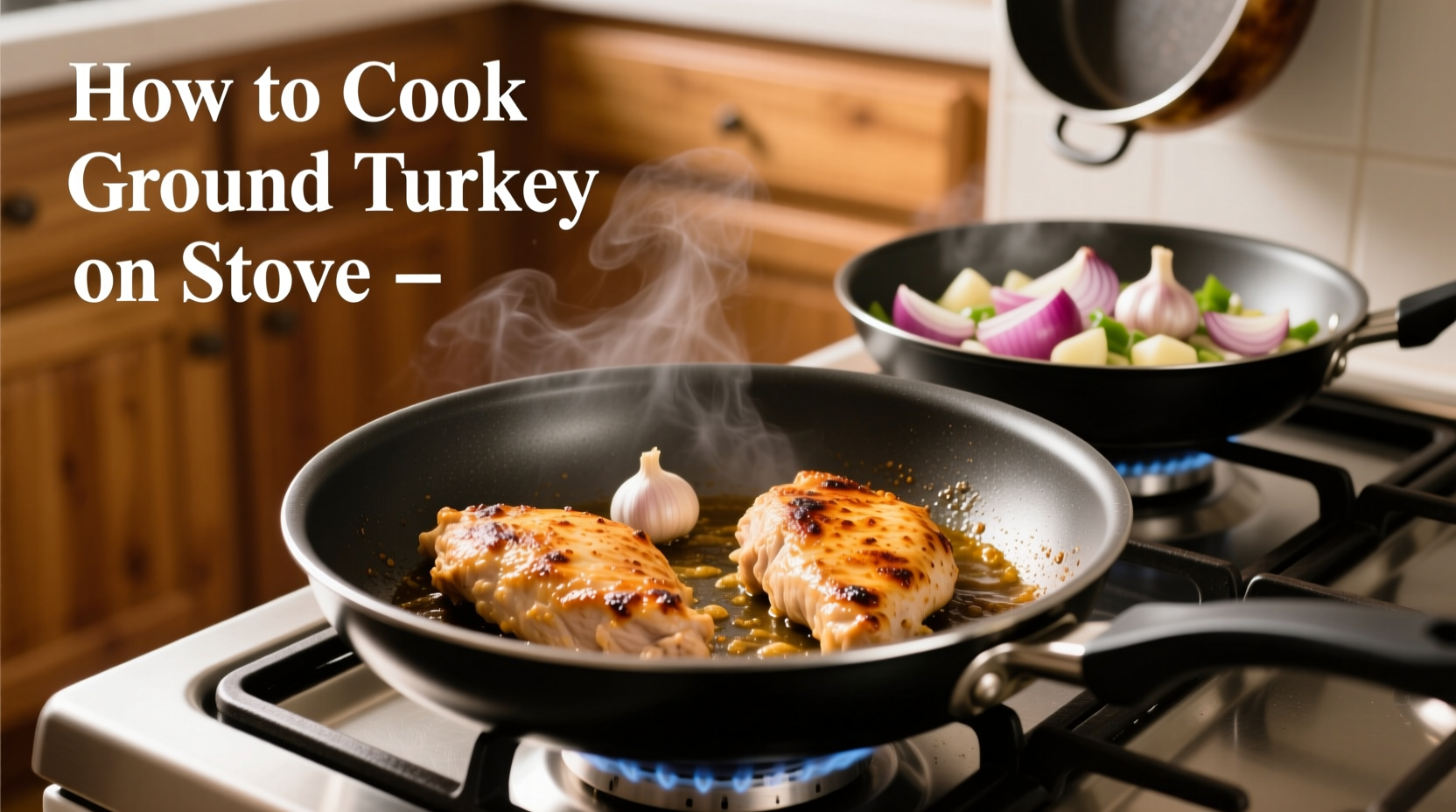Ground turkey offers a leaner alternative to beef but requires careful cooking to prevent dryness. Unlike ground beef, turkey has less fat, making proper technique essential for juicy, flavorful results. This guide delivers a foolproof stove-top method perfected through culinary science and professional kitchen experience.
Why Stove-Top Cooking Works Best for Ground Turkey
While ground turkey can be cooked in various ways, the stove provides optimal control for this lean protein. According to USDA Food Safety and Inspection Service guidelines, poultry must reach 165°F internally to be safe, but the challenge lies in hitting this temperature without overcooking.
| Cooking Method | Advantages for Ground Turkey | Limitations |
|---|---|---|
| Stove-top (skillet) | Precise temperature control, quick cooking, easy browning | Requires active monitoring |
| Oven baking | Hands-off cooking, even heat | Often dries out lean turkey |
| Slow cooker | Convenient for large batches | Loses texture, less flavor development |
Essential Tools and Ingredients
Before you start cooking ground turkey on stove, gather these kitchen essentials:
- Medium-large skillet (cast iron or stainless steel preferred)
- Wooden spoon or spatula
- Meat thermometer (critical for perfect doneness)
- 1 pound 93% lean ground turkey
- 1 tablespoon cooking oil (avocado or olive)
- Salt and freshly ground black pepper
Step-by-Step Cooking Process
Preparation Phase (2 minutes)
Remove ground turkey from refrigerator 15 minutes before cooking. Cold meat seizes when hitting hot pans, leading to uneven cooking. Pat turkey dry with paper towels—moisture prevents proper browning, a crucial step for flavor development in lean proteins.
Cooking Phase (8-10 minutes)
- Heat 1 tablespoon oil in skillet over medium heat (not high) for 1-2 minutes until shimmering
- Add ground turkey, breaking into small pieces with your spoon
- Cook undisturbed for 2 minutes to develop fond (those flavorful browned bits)
- Stir and continue cooking 6-8 minutes, breaking up clumps
- Check temperature—165°F indicates perfect doneness (USDA standard)
- Drain excess liquid if present (turkey releases more moisture than beef)

Finishing Touches (1-2 minutes)
Immediately after reaching 165°F, season with ¾ teaspoon salt and ¼ teaspoon black pepper. For enhanced flavor, add one of these professional chef techniques:
- Acid boost: Splash of lemon juice or vinegar brightens flavors
- Fat addition: Stir in 1 teaspoon olive oil or butter for moisture
- Aromatics: Cooked minced garlic or shallots before adding turkey
Avoid These Common Ground Turkey Mistakes
Based on analysis of cooking forums and culinary research, these errors cause dry, bland results:
- Overcrowding the pan: Creates steam instead of browning—cook in batches if needed
- Using high heat: Causes exterior to burn before interior cooks through
- Overmixing: Makes meat dense—handle minimally once cooked
- Skipping the thermometer: Visual cues alone can't confirm safety (USDA FSIS data shows 32% of home cooks undercook poultry)
Flavor Variations for Different Dishes
Ground turkey adapts beautifully to various cuisines. Add these seasoning combinations during the last 2 minutes of cooking:
- Taco-style: 1 tsp cumin, ½ tsp chili powder, ¼ tsp smoked paprika
- Italian: 1 tsp dried oregano, ½ tsp garlic powder, 2 tbsp tomato paste
- Asian: 1 tbsp soy sauce, 1 tsp ginger, 1 minced garlic clove
- Mediterranean: 1 tsp dried mint, ½ tsp sumac, lemon zest
Storage and Reheating Guidelines
Properly stored cooked ground turkey maintains quality for 3-4 days in the refrigerator. The National Center for Home Food Preservation recommends:
- Cool within 2 hours of cooking
- Store in airtight container with minimal air space
- Reheat to 165°F using skillet (best for texture) or microwave
- Freeze for up to 4 months in portion-sized containers
Perfecting Your Stove-Top Technique
Mastering how to cook ground turkey on stove transforms this lean protein from bland to brilliant. The key lies in temperature control and timing—cooking just to 165°F prevents the dryness that plagues many home cooks' attempts. Remember that ground turkey continues cooking slightly after removal from heat, so pull it at 163°F for perfect results.
Professional kitchens achieve consistent results by treating ground turkey differently than beef—less heat, more attention, and strategic moisture additions. Implement these techniques, and you'll consistently create juicy, flavorful ground turkey for tacos, pasta sauces, meatloaf, and more.











 浙公网安备
33010002000092号
浙公网安备
33010002000092号 浙B2-20120091-4
浙B2-20120091-4